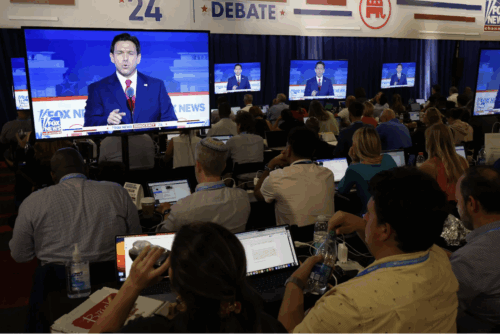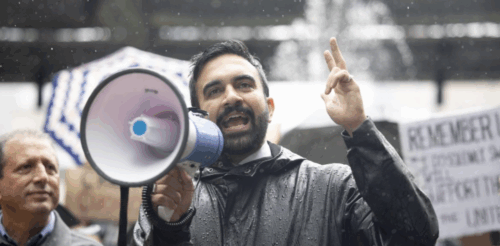

Election campaign advertising in recent years has undergone a dramatic transformation, blending traditional and digital formats while adopting sophisticated strategies to reach and persuade diverse voter groups. With record levels of expenditure now funnelled not just into television and print but also digital platforms like Facebook, Instagram, and Youtube, political parties and candidates have adopted data-driven tactics and psychological advertising to maximise impact and tailor their messages for specific audiences. As the rise in campaign spending has prompted new legal reforms and highlighted contrasting examples of campaign effectiveness, the evolving landscape underscores the need for both innovative outreach and responsible limits.
Election campaign advertising today blends both the traditional and the digital, and with strategic design, enables parties to craft messages that resonate and persuade diverse voter groups. In recent election cycles, digital platforms have taken an increasingly central role in campaign advertising, though traditional media remains significant. The 2022 Australian Federal election saw parties spend at least $12.5 million on Instagram and Facebook ads during the final two months of the election. This trend of heavy investment in digital advertising continued in the 2025 Australian campaign, with major parties spending approximately $40 million on platforms owned by Meta and Google between the start of the campaign and polling day.
However, despite the shift towards digitalization, television still remains at the forefront of election ad spending. Significant spending on free to air TV ads and the platform Youtube attracting over $17 million alone in political spend in 2025 continues to underscore the importance of digital media.
Outside of investing in different forms of media, political parties have employed diverse psychological tactics. Most political parties today utilise three principal types of election advertising within their strategies. These are positive advertising, which highlights a candidate’s virtues and policy promises; negative advertising, which aims to undermine rival candidates by highlighting their faults or policy failures; and comparative advertising, which directly contrasts one contender’s strengths with another’s weaknesses. Many modern political ads lean on emotional triggers; for example, fear of loss, hope for a better future, or pride in identity to drive engagement more than purely factual messages.
Outside of psychological signalling, the majority of modern election campaigns now focus on strategic “micro-targeting”, in which messages are tailored to specific voter segments using data analytics and digital platforms such as Facebook and Instagram for real‐time engagement, with tailored political ads targeting a single audience attribute projecting a 70% higher effectiveness in swaying policy support compared to showing the same universal ad to everyone. This strategy is utilised by parties small or large, with smaller or niche parties utilising highly narrow targeting strategies to poach voters, while major parties focus on appealing to a broader audience.

Governor Ron DeSantis appearing on Fox News
Moreover, election spending has magnified over recent periods. In Australian federal elections, every candidate or party that has received over 4% of the vote will receive public funding of $3.427 per first preference vote. For example, in the 2019 election, public funding amounted to $68.6 million, with the Liberal Party claiming $27.6 million and the Labor Party $24.7 million. Another source of funding that campaigners rely on are donations. In the 2019 financial year, it has been reported that political parties received at least $131 million, or 30% of total income from donations, with undisclosed donations not contributing to this figure.
Australian election spending has surged in recent elections, with over $418 million spent leading up to the 2022 federal election with the Coalition, United Australia Party and Labor spending $132 million, $123 million and $116 million respectively. Comparatively, political parties spent a total of $124 million in 1999. This reflects an increase of over 237% in total spending over the 23 years.
Furthermore, the United States magnifies the trend in Australia, with spending in the 2024 presidential election amounting to a total of US$15.9 billion. Comparatively, in the 2020 campaign US$15.1 billion was spent while US$6.5 billion was spent on the 2016 election. This highlights the upward trend in election spending as political figures aspire to acquire the vote of the public.
Independent parties also contributed to the rising expenditure in the 2025 Australian federal election, seeking to unseat the major parties. Most significantly, independent candidate Caz Heise spent $1,994,969 on her unsuccessful campaign for the seat of Cowper, with her spending sourced from 55 donors totalling $2,141,655. Most notably of Heise’s donations was political activist group Climate 200 donating $1.12 million. Climate 200 was a prominent figure in the recent election, donating a total of $10.9 million to independent campaigners, headlining the record $27 million spent by independents.
With the spending of political parties and individual candidates escalating, it is in response that reforms to donation laws have been passed in 2025, effective from June 2026. The donation laws impose a campaign spending limit of $800,000 for individuals and $90 million for political parties. Alongside annual donation caps of $50,000 per individual donor, disclosure thresholds have also been cut from $16,900 to $5,000. With the disclosure thresholds being cut, this acts to ensure that there is greater transparency and accountability from candidates and parties.
However, records released by the Australian Electoral Commission illustrate that almost all independent candidates that were elected in the 2025 election have spent in excess of the cap, with many unsuccessful candidates including Heise also exceeding this new limit. Similarly, while data is currently unreleased for the 2025 election, the Coalition, United Australia Party and Labor would have exceeded the $90 million limit for political parties in the 2022 election, with the 3 parties $25 million over the limit.
With bipartisan support for the amendments, this enables campaigners in Australia to use unique methods to attract voter support and create fairness in the election process, rather than campaigners solely using their large spending to ‘buy’ a seat in parliament.
Greater spending on election advertising and other means to promote a party or an individual does not guarantee greater success in winning political positions. This is especially illustrated in the case of Zohran Mamdani’s campaign in the ongoing 2025 New York City mayoral election and the case of Clive Palmer’s huge spending in Australia’s recent federal election.
Compared to Palmer, Mamdani’s campaign leveraged low-budget, high-engagement tactics. These tactics include implementing an army of roughly 50,000 volunteers and posting highly shareable social-media. Leveraging platforms like Instagram Reels and TikTok has allowed Mamdani to speak directly to younger voters in an informal setting and using pop-references to create the impression of authenticity and to showcase his solution to the problems that young New Yorkers are facing. This has led to Mamdani’s social media presence becoming especially viral over the past months, with millions of views and likes. Combined, these tactics fosters a sense of connection between Mamdani and voters by humanising the campaign.
Mamdani’s funding during the mayoral primary is far surpassed by his biggest opponent Andrew Cuomo, who received around $7.6m in donations, which is over four times that of Mamdani. Nevertheless, Mamdani achieved remarkable success in The Bronx and Brooklyn where is currently targeting voters. Mamdani holds 43% support among registered voters in a recent poll by Emerson College, beating out Cuomo’s 28%. The effectiveness of Mamdani’s campaign does not lie within the volume of media buys but rather through resonance and personal connection with the voter.

New York Mayoral Candidate Zohran Mamdani at a campaign rally
This approach is greatly contrasted by Clive Palmer and his party Trumpet of Patriots in the 2025 Australian federal election. Palmer’s huge spending, up to $60m in advertising, led to immense failure with no seats in the House of Representative and only 1.85% of the national vote. Palmer outspent the major parties by millions on mass advertising and spam messaging, yet could not find the same resonance to the public that Zohran Mamdani could achieve. In the eyes of voters, Palmer was disconnected from the economic realities of Australians like the current cost of living and cost of house ownership. Palmer lacked relational depth with the public and authenticity that grassroots spending could achieve.
Mamdani’s approach achieves a narrow but deep influence via social media and connection to young voters. Palmer’s approach produced broad but shallow influence that led to disconnection and weak conversion with the public. Beyond how much money is spent on a campaign, it matters more how well that money is spent.
Despite unprecedented increases in campaign expenditure and advances in digital targeting, greater spending does not automatically guarantee electoral success. The contrast between grassroots, authentic engagement shown by Zohran Mamdani’s viral campaign in New York, and high-budget, mass advertising like Clive Palmer’s Australian campaign reveals that resonance and meaningful connection are often more effective than simply outspending rivals. In an age where digital platforms and micro-targeting dominate, the quality and strategic approach of election advertising now matter more than sheer monetary investment, emphasising the importance of fairness, transparency, and authentic voter engagement in the democratic process.
The CAINZ Digest is published by CAINZ, a student society affiliated with the Faculty of Business at the University of Melbourne. Opinions published are not necessarily those of the publishers, printers or editors. CAINZ and the University of Melbourne do not accept any responsibility for the accuracy of information contained in the publication.